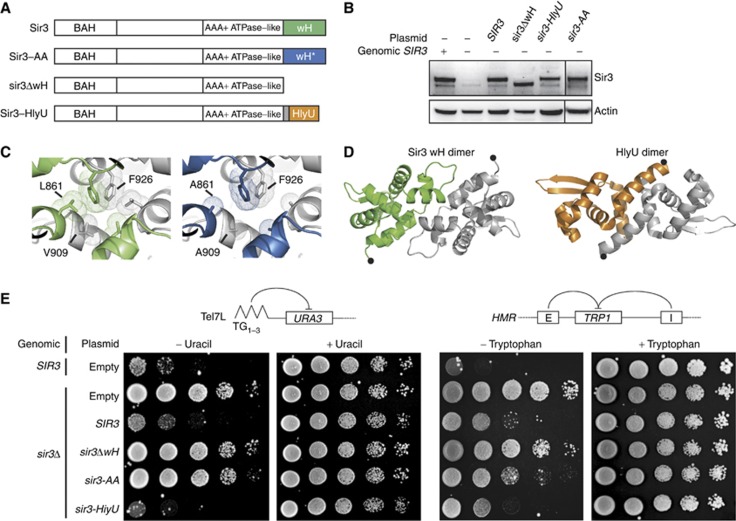Figure 3.
Sir3 wH homodimerization is essential for telomeric and HMR silencing. (A) Schematic representation of the Sir3 constructs used. Sir3 wH wild-type (green), the L861A-V909A mutant (blue) and the HlyU module from Vibrio vulnificus (orange) are highlighted. (B) Western blot analysis of alkaline yeast extracts (Ruault et al, 2011) of the strains used in (E) show wild-type levels of Sir3 expression, using a polyclonal antibody raised against full-length Sir3 (a kind gift from L Pillus). (C) Modelled representation of the impact L861A and V909A mutations on the extent of the hydrophobic Sir3 wH dimerization interface. (D) Representation of the Sir3 wH or the HlyU dimer. The most C-terminal residues are highlighted by a black dot. (E) The indicated strain was grown overnight in selective media and 10-fold dilutions were dropped on the indicated media. Ability to repress a URA3 gene inserted at the telomere 7L was tested by growth on synthetic media lacking uracil while ability to repress a TRP1 gene inserted at the HMR locus was tested by growth on synthetic media lacking tryptophan. Synthetic complete media (only selecting for plasmids) was used to control for equal deposition.

